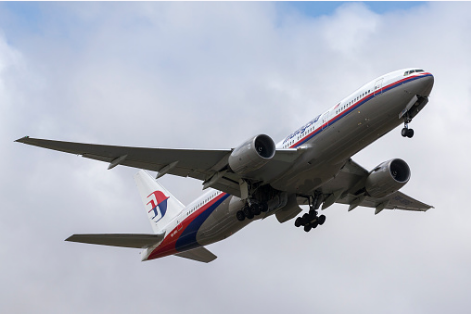Malaysia Airlines Flight 370 Found
Year of Aviation Disaster – 2014
Common alternate title: MH370 Disappearance
Date of Event: 8 March 2014
 |
| symbolic picture-PHOTO CREDIT-PIXABY.COM |
Location of the plane’s disappearance: Indian Ocean
This incident happened in 2014 when Malaysia Airlines plane 370 went missing. The incident of the disappearance of this aircraft is also called the disappearance of the MH370 aircraft. The incident occurred on March 8, 2014, when a Malaysia Airlines passenger jet went missing on its flight from Kuala Lumpur to Beijing. When the plane went missing, a search operation was carried out from the Indian Ocean west of Australia to Central Asia due to the disappearance of the Boeing 777 with 12 crew members including 227 passengers on board. Such is the astonishing nature of the disappearance of Flight 370 that the incident has become one of the most famous missing aircraft in history.
READ ALSO–
lord william benick reforms in india
Aircraft missing and search operation
The aircraft (370) took off at 12:41 local time and reached an altitude of 10,700 m (35,000 ft) at 1:01 am. The Aircraft Communication Addressing and Reporting System (ACARS), which transmitted data about the aircraft’s performance, sent its last transmission at 1:07 and was later discontinued.
The last contact with the crew occurred at 1:19, and at 1:21 a.m. the aircraft’s transponder, which communicated with air-traffic control, was turned off, as the aircraft entered Vietnamese airspace over the South China Sea. was about to enter. At 1:30 Malaysian military and civilian radar began tracking the aircraft as it moved across the sky and then flew southwest over the Malay Peninsula and then northwest over the Straits of Malacca. At 2:22 am Malaysian military radar lost contact with the aircraft over the Andaman Sea. An Inmarsat satellite in geostationary orbit over the Indian Ocean received an hourly signal from Flight 370 and last detected the aircraft at 8:11 am.
Initial searches after the plane went missing were focused on the South China Sea. After it was confirmed that Flight 370 had turned west shortly after the transponder shutdown, the search operations moved into the Straits of Malacca and the Andaman Sea. The Inmarsat contact was revealed on March 15, a week after the plane went missing. Signal analysis failed to definitively locate the aircraft, but it was inferred that the aircraft could be anywhere on the two arcs–
- First – from Java south to the Indian Ocean in the south-west of Australia and
- The second – extends northwards throughout Asia, from Vietnam to Turkmenistan.
On 24 March Malaysian Prime Minister Najib Razak announced that, based on an analysis of the final signals, Inmarsat and the UK Air Accident Investigation Branch (AAIB) had concluded that the flight was 2,500 km (1,500 mi) southwest of Australia over the Indian Ocean. ) had met with an accident in a remote part of Thus, there was no chance of survival of any of the passengers or any of the crew members.
 |
| symbolic picture-IMAGE CREDIT-PIXABY.COM |
Search for Plane Wreckage
The remote location of the accident site was hampering the search for the debris. Beginning on 6 April, an Australian ship detected several acoustic pings from a Boeing 777’s flight recorder (or “black box”) some 2,000 km (1,200 mi) northwest of Perth, Western Australia. Further analysis by the AAIB of Inmarsat data also found a partial signal from the aircraft at 8:19 a.m., consistent with the location of the acoustic pings, the last of which was heard on 8 April. If the signals were from Flight 370, the flight recorder was likely at the end of its battery life. Further exploration was carried out using a robotic submarine. Although the pings were spread over a wide area, the submarine found no wreckage, and tests found that a faulty cable in the acoustic equipment could have produced the pings.
READ ASLO-THE VENTUERS A FAMOUS MUSIC GROUP
Debris search continued
The first piece of debris was not found until July 29, 2015, when the right-wing flaperon was discovered by an Australian official on a beach on the French island of Reunion, about 3,700 km (2,300 mi) west of the Indian Ocean region. Over the next year and a half, 26 more pieces of debris were found off the coasts of Tanzania, Mozambique, South Africa, Madagascar and Mauritius. Three of the 27 pieces were positively identified as coming from Flight 370, and 17 were believed to have come from the aircraft.
Two fragments came from the interior of the cabin, indicating that the aircraft had broken down, but whether the aircraft broke in the air or under the influence of the sea could not be determined. A study of a fragment of the Reunion wing flaperon and right wing flap found in Tanzania showed that the aircraft did not undergo a controlled descent; That is, the aircraft was not guided for water landing. Some researchers note that Flight 370 could have collided vertically with water, a possibility in which the results of a modeling study conducted prior to the discovery of the flaperon may explain the lack of physical evidence.।Debris locations were used to narrow the search area in the Indian Ocean, as some of the potential crash sites were unlikely to produce debris that would have moved into Africa.
Shutting down the search for Flight 370
The governments of Malaysia, Australia and China stopped the search for Flight 370 in January 2017. An American company, Ocean Infinity, received permission from the Malaysian government to continue the search until May 2017, when the Malaysian Ministry of Transport announced that it would call out that search. In July 2018, the Malaysian government released its final report on the disappearance of Flight 370. The mechanical malfunction was deemed highly unlikely, and “the change in flight path likely resulted from manual input,” but investigators could not determine why Flight 370 disappeared.
Possible reasons for the disappearance of the plane
In the weeks following the disappearance of Flight 370, speculations abounded, ranging from mechanical failure to pilot suicide, but no accurate information was obtained. The loss of ACARS and transponder signals gave rise to ongoing speculation about some form of hijacking, but no person or organization claimed any such responsibility, and it did not appear that the hijackers had hijacked the aircraft in the southern Indian Ocean. I would have blown up. This signal was probably locked from inside the plane, suggesting suicide by one of the crew – a possibility that Malaysian authorities have not yet ruled out – but nothing suspicious in the behavior of the captain, first officer or cabin was found. Crew before flight. Following the discovery of the wreckage, some speculated that Flight 370 was shot down, but no evidence of shrapnel from a missile or other projectile has been found.